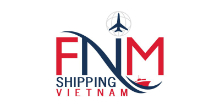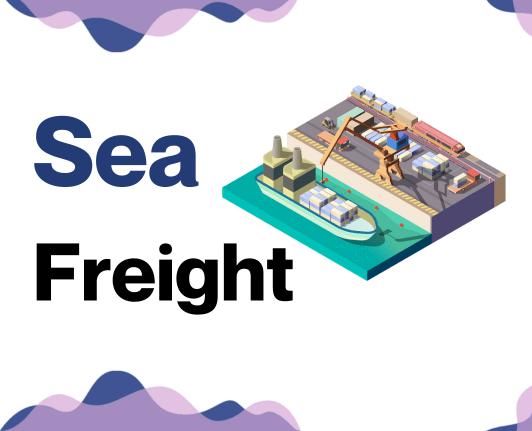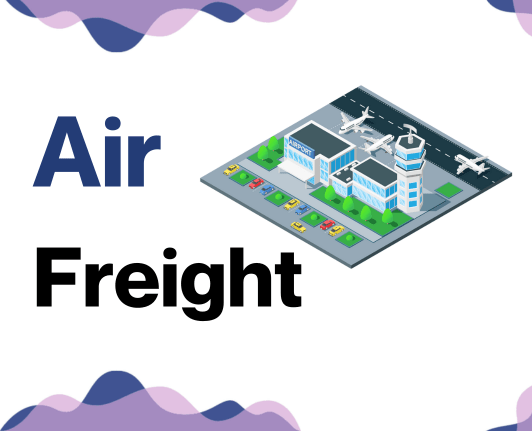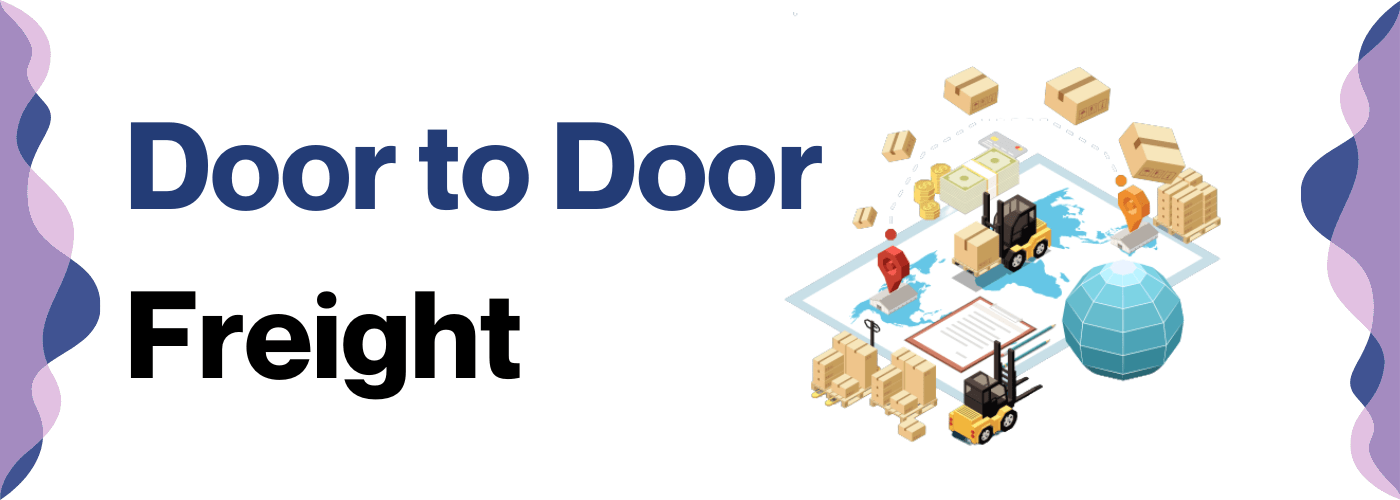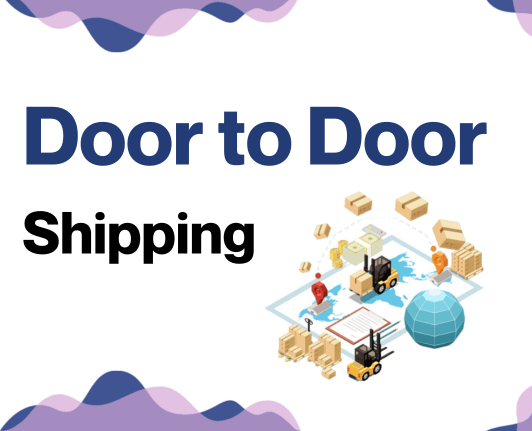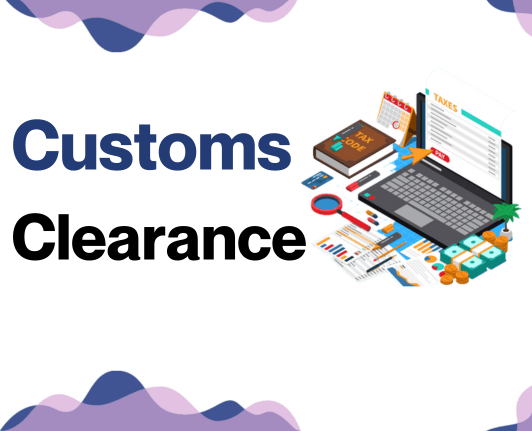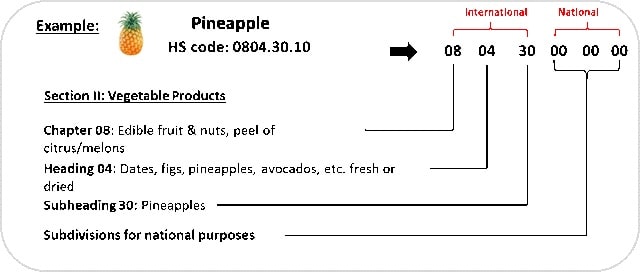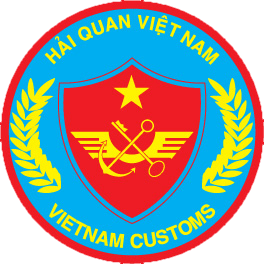Taking the leap from the tranquil Mekong Delta to the vibrant lands of Flamenco dancing may feel like a daunting tango, but we've got you covered. Dealing with a maze of freight rates, gnarly transit times, and bewildering customs regulations can often feel like more trouble than it's worth, but it doesn't have to be.
This comprehensive guide aims to demystify the process of shipping goods between Vietnam and Spain. It provides insights into the various freight options, elucidates on the nitty-gritty of customs clearance, deciphers complex duties and taxes, and offers sage advice tailored for international businesses making their mark in these exciting times.
If the process still feels overwhelming, let FNM Vietnam handle it for you! With their robust services, they make the daunting task of international shipping as smooth as sailing down the Mekong, transforming challenges into successful ventures for your business.
Which are the different modes of transportation between Vietnam and Spain?
Choosing the optimal transport method from Vietnam to Spain is a lot like picking the best route for a cross-country trip. Sure, flying is easiest, but what if you're moving an elephant – not so simple, right? Factor in the vast distance, diverse landscapes in between, and the numerous border crossings, air and sea freight come up as your best bet.
The key is finding the balance - quick delivery versus cost-effectiveness. For shipping large, heavy goods, you might prefer the slow, steady stride of sea freight. For smaller, time-sensitive packages, the speed of air freight could become your trusted friend.
How can FNM Vietnam help?
When it comes to shipping goods between Vietnam and Spain, FNM Vietnam makes it smooth and worry-free for you. Our services handle all from complex logistics to customs clearance, ensuring your shipment reaches its destination on time. Ready to experience seamless shipping? Contact us and get a free estimate in less than 24 hours. Got a question? Our consultants are just a call away.
FNM Vietnam Tip: Sea freight might be the best solution for you if:
- You're moving big loads or large items. Sea freight offers roomy, cost-effective solutions.
- Your shipment isn't time-critical. Ocean routes take longer but are often more reliable.
- Your supply chain links major ports, tapping into a broad network of sea lanes.
Sea freight between Vietnam and Spain
Unravel the intricate ties of maritime commerce weaving between Vietnam and Spain; a bustling route that carries the thunderous pulse of international trade. The flourishing relationship is anchored by the bustling cargo ports of Hai Phong in Vietnam and Barcelona in Spain, threading together prime industrial nerve centers.
Drift through the wide waters with ocean freight as your steed, a laid-back, cost-effective ally when it comes to breezing large-volume cargo across long distances. Yet, beneath this sail, lurks a swirling tide of challenges. Many businesses wrestle with the rough seas of paperwork blunders, customs confusion, and hidden costs.
Now, imagine weaving through these treacherous currents, handling every whirlpool with grace. Sounds too good to be true? This guide aims to do just that. Swing open the door to the behind-the-scenes, shore up your understanding of the process, and chart your course more efficiently and confidently. It's akin to wielding a compass that carefully guides you through the twisting labyrinth of ocean freight between these two bustling economies. Stay tuned as we explore the nitty-gritty of achieving smooth, stress-free shipments from Vietnam to Spain.
Main shipping ports in Vietnam
Port of Saigon
Located in Southern Vietnam, the Port of Saigon is essential for both import and export trade, with a shipping volume of approximately 10 million tons of cargo.
Key Trading Partners and Strategic Importance: Being Vietnam's busiest commercial port, it has multiple trade partners globally, including a significant amount from the United States, China, Japan, and Korea.
Context for Businesses: If you are looking to expand your business in Southeast Asia, the Port of Saigon, due to its robust infrastructure and strategic location, might be ideal for your needs.
Port of Da Nang
Located in central Vietnam, the Port of Da Nang serves as a key shipping and logistics hub for the region, handling around 3,9 million tons of cargo.
Key Trading Partners and Strategic Importance: The Port of Da Nang maintains strong trading relationships primarily with India, China, Japan, and Singapore, among others.
Context for Businesses: This port could be an excellent option if you're dealing with goods that need to reach central Vietnam or nearby regions efficiently.
Port of Hai Phong
Situated in Northern Vietnam, Hai Phong Port has an annual throughput of approximately 6 million tons.
Key Trading Partners and Strategic Importance: Hai Phong Port primarily trades with countries such as China, Japan, and the United States.
Context for Businesses: If your company is looking to establish a presence in Northern Vietnam or requires efficient sea trade routes, Hai Phong Port's strategic location and facilities could benefit your operations.
Port of Quy Nhon
Located in the Binh Dinh Province, the Port of Quy Nhon manages around 11 million tons of cargo.
Key Trading Partners and Strategic Importance: Key trading partners include ASEAN countries, Europe, and America.
Context for Businesses: This port is an excellent choice for businesses aiming to reach the Binh Dinh province and nearby provinces in Vietnam's South Central Coast region.
Port of Nha Trang
This port, located in Kahn Hoa Province, handles about 1 million ton of cargo annually.
Key Trading Partners and Strategic Importance: The Port of Nha Trang's main trading partners are primarily ASEAN countries and China.
Context for Businesses: If you're seeking to access markets in the Khanh Hoa Province and its surrounding region, the Port of Nha Trang could be a vital part of your shipping strategy due to its convenient location.
Port of Vung Tau
One of the major deepwater seaports located in southern Vietnam, the Port of Vung Tau, has a shipping volume of roughly 400,000 tons annually.
Key Trading Partners and Strategic Importance: The key trading partners for this port include China, South Korea, and several countries from ASEAN.
Context for Businesses: The Port of Vung Tau might be an essential part of your logistics planning if your company is trading with partners that have their main operations located in the South of Vietnam, given its deepwater facilities offering accommodating larger vessels.
Main shipping ports in Spain
Port of Valencia
Located on the east coast of Spain, the Port of Valencia handles an impressive shipping volume of over 65 million tons annually.
Key Trading Partners and Strategic Importance: With the Mediterranean countries as key trading partners, it plays a pivotal role in connecting Spain with the Middle East, North Africa, and Asian markets.
Context for Businesses: If you're looking to reach these key markets, taking advantage of the Port of Valencia's superior infrastructure and extensive connections might be a savvy move on your part.
Port of Algeciras
Spain's southernmost port, located in Andalusia, the Port of Algeciras manages an astounding 69 million tons per year.
Key Trading Partners and Strategic Importance: Essential in trade with northern Europe, Asia, and the Americas, its location snugly nestled on the Strait of Gibraltar boosts its strategic importance.
Context for Businesses: For those businesses aiming to get a stronghold in northern Europe and the Americas, weaving the Port of Algeciras into your shipping plan might be a good strategy, thanks to its wide international reach.
Port of Barcelona
Located on Spain’s northeast coast, the Port of Barcelona has a shipping volume exceeding 44 million tons of cargo a year.
Key Trading Partners and Strategic Importance: Immensely significant for trade with the Mediterranean and Asian markets, the presence of Europe’s largest logistical and intermodal area makes it a strategic trading titan.
Context for Businesses: If your focus is on the Mediterranean and Asian markets, incorporating the Port of Barcelona into your logistical pipeline may prove immensely beneficial due to its colossal logistical area and connections.
Port of Bilbao
Located in the north of Spain, the Port of Bilbao typically handles over 39 million tons annually.
Key Trading Partners and Strategic Importance: This port has strong trade relationships with Latin America and Europe; with its proximity to France, it serves as a crucial link for trans-European freight.
Context for Businesses: If trans-European freight is your priority, considering the Port of Bilbao for its geographic advantage and significant Latin American connections is a wise move.
Port of Las Palmas
Nestled in the Atlantic Ocean, the Port of Las Palmas is famous for handling over 21 million tons yearly.
Key Trading Partners and Strategic Importance: With its location, it’s a crucial player in trade with West African countries and the Americas.
Context for Businesses: For those with a keen eye on the West African and Americas markets, considering the Port of Las Palmas, with its strategic Atlantic location, could be a key part in expanding your footprint.
Port of Tarragona
Located in Catalonia on Spain’s northeastern coast, the Port of Tarragona has a shipping volume of over 36 million tons a year.
Key Trading Partners and Strategic Importance: Its key trading partnerships mainly spread across the Mediterranean and the Middle East.
Context for Businesses: If you seek to strengthen your position in the Mediterranean and Middle Eastern markets, then the Port of Tarragona, with its robust infrastructure, could well be the missing link in your strategic approach.
Should I choose FCL or LCL when shipping between Vietnam and Spain?
When shipping goods from Vietnam to Spain, choosing between Full Container Load (FCL) and Less than Container Load (LCL), also known as consolidation, is a pivotal step. It's not just about space, but also cost efficiency, timing, and reliability. These options can have a tangible effect on your business's bottom line and customer satisfaction.
So, let's dive in to understand these two sea freight options better, enabling you to make a strategic decision that aligns with your specific needs. Get set to unlock the potential for smooth and effective shipping!
LCL: Less than Container Load
Definition: LCL, or Less than Container Load, shipping is a type of ocean freight in which your goods share container space with others. It offers a balance between cost and speed, ideal for smaller shipments.
When to Use: It’s wise to opt for LCL shipment when your cargo is less than 15 CBM (cubic metres), instead of sending a half-empty container, reducing costs and waste. Specifically, if you're shipping from Vietnam to Spain and your cargo volume falls between 13-15 CBM, LCL freight is likely the best choice.
Example: Let's say your business needs to send 10 CBM of manufactured products from Ho Chi Minh City to Barcelona. Instead of booking a whole container and paying for unused space, you'd share the container, splitting the costs with others, thus maximizing efficiency and economy.
Cost Implications: LCL's cost-effectiveness lies in its 'pay for what you use' premise. Your LCL freight quote will be based on the volume of your cargo rather than the whole container, which often makes it the more affordable choice for low-volume shipments. But bear in mind that it might entail higher handling charges at both origin and destination ports due to frequent consolidations and de-consolidations.
FCL: Full Container Load
FCL, or Full Container Load, refers to the shipping option where you book an entire container exclusively for your cargo. These could be 20'ft or 40'ft in size, and the FCL container is sealed at its origin and only unsealed at its destination, thereby ensuring the safety and security of goods.
FCL Shipping is a preferable choice when the shipment volume is more than 13/14/15 CBM. This option provides not only added security but also cost-effectiveness for large volumes.
Consider this scenario – You're a furniture store owner in Spain, sourcing bamboo furniture from Vietnam. With over 15 CBM of cargo, choosing FCL Shipping enables you to get all your products in one 20'ft container, reducing per unit shipping cost.
On costs, while the upfront FCL shipping quote might appear high, it's surprisingly economical for larger cargo volumes. It avoids consolidation/deconsolidation fees associated with LCL (Less than Container Load). Plus, with just your goods in the container, there's less handling involved, reducing the risk of damage and additional costs.
Say goodbye to shipping headaches!
Whether it's consolidated shipping or a full container load, each has its unique requirements for your cargo transportation from Vietnam to Spain. At FNM Vietnam, we untangle the intricacies of cargo shipping. Our expertise in ocean freight ensures your decision is data-driven, considering factors such as shipment size, urgency, and costs.
Let us maneuver the complexities for you and transform your shipping experience. Contact us today for a hassle-free estimate tailored to your business needs.
How long does sea freight take between Vietnam and Spain?
Sea freight between Vietnam and Spain usually takes around 30 to 40 days, depending on various factors. The transit times consider aspects like the chosen ports, the weight, and the nature of the goods being shipped. It's important to note that these are approximate times - for a precise quote that suits your specific needs, consider reaching out to freight forwarders like FNM Vietnam.
As for the average transit times between the main freight ports in both countries, refer to the table below:
| Vietnamese Port | Spanish Port | Average Transit Time (Days) |
| Port of Ho Chi Minh | Port of Valencia | 42 |
| Port of Hai Phong | Port of Barcelona | 41 |
| Port of Da Nang | Port of Algeciras | 34 |
| Port of Quy Nhon | Port of Bilbao | 50 |
*Each transit time assumes optimal conditions and could vary depending on various factors including customs clearance and weather conditions.
How much does it cost to ship a container between Vietnam and Spain?
Understanding the cost of shipping a container from Vietnam to Spain is tricky, with ocean freight rates swinging broadly. It's crucial to know that concrete prices are elusive due to factors like loading points, destination points, the chosen carrier, the specifics of the goods, and monthly market fluctuations.
While we wish we could give you an exact shipping cost, it's not feasible without delving into the details of your unique shipment. But fear not, our shipping specialists are well-equipped to help. They'll dive deep into the nitty-gritty of your needs and present you with the best-personalized rates, tailored with precision on a case-by-case basis.
| Vietnamese Port | Spanish Port | Average Cost ($) |
| Port of Ho Chi Minh | Port of Valencia | 5476 |
| Port of Hai Phong | Port of Barcelona | 4909 |
| Port of Da Nang | Port of Algeciras | 4964 |
| Port of Quy Nhon | Port of Bilbao | 6000 |
*Each cost assumes optimal conditions and could vary depending on various factors including customs clearance.
Special transportation services
Out of Gauge (OOG) Container
Definition: Out-of-gauge (OOG) containers, perfect for oversized loads, are particularly designed to exceed standard container size limits. They can accommodate Out-of-gauge cargo that doesn’t fit into a standard-sized container due to excess width, height, or length.
Suitable for: OOG containers are ideal for transporting large machinery, construction equipment, and large manufactured parts.
Examples: Example cargo could be ship parts, tractors, large factory machines, etc.
Why it might be the best choice for you: If your Vietnam-Spain goods shipment involves large, uneven sizes that would protrude from a standard container, an OOG container would be the answer.
Break Bulk
Definition: Breakbulk involves loose cargo load shipping methods, where individual cargo items are loaded onto the shipping vessel one piece at a time. The goods aren't contained in any shipping container.
Suitable for: Break bulk is commonly used for oversized items, heavy equipment, construction materials, or goods that are too big or heavy to be containerized.
Examples: This might include large construction materials, iron beams, turbines, generators, or even vehicles.
Why it might be the best choice for you: If you have oversized or overweight goods that don’t easily fit into OOG containers, breakbulk would be your ideal shipping option.
Dry Bulk
Definition: Dry bulk shipping involves the transport of dry, unpackaged goods loaded in large quantities directly into the vessel’s hold.
Suitable for: It's typically used for commodities like grains, coals, metals, cement, etc.
Examples: You would use Dry Bulk when shipping rice from Vietnam to Spain or importing minerals or coals back to Vietnam.
Why it might be the best choice for you: Dry bulk would fit your needs perfectly if you are dealing with massive volumes of unpackaged, dry commodities between Vietnam and Spain.
Roll-on/Roll-off (Ro-Ro)
Definition: Ro-Ro refers to a vessel where cargo is driven or towed on and off, on its wheels. The vessels have built-in ramps which allow cargo to be efficiently rolled on and rolled off the ship.
Suitable for: It's typically used for shipping vehicles including cars, trucks, semi-trailer trucks, trailers, and railroad cars.
Examples: An example may be shipping an entire fleet of cars or heavy machinery on wheels from Vietnam to Spain.
Why it might be the best choice for you: If your business involves moving vehicles or wheeled machinery between Vietnam and Spain, Ro-Ro would be the most efficient and cost-effective method for you.
Reefer Containers
Definition: Reefer containers are refrigerated, allowing for temperature-controlled goods to be shipped.
Suitable for: They're typically used for perishable commodities such as fruits, meat, fish, vegetables, dairy products, or even pharmaceuticals.
Examples: For instance, exporting fresh fruits or seafood delicacies from Vietnam to Spain.
Why it might be the best choice for you: Reefer containers would be your friend in need if your shipping involves perishable or temperature-sensitive goods between Vietnam and Spain.
Whatever your shipping needs, rest assured that FNM Vietnam is ready to assist you. Feel free to get in touch with us for a free shipping quote, delivered to you in less than 24 hours.
FNM Vietnam Tip: Air freight might be the best solution for you if:
- You're on a tight schedule. Air freight delivers speed unmatched by other modes.
- Your cargo is under 2 CBM, a good fit for air's smaller capacity.
- Your destination is off the usual routes, making air's global network a key asset.
Air freight between Vietnam and Spain
Air freight between Vietnam and Spain is like a high-speed express train - efficient and supremely reliable. Perfect for your petite, precious packages like electronics or designer apparel, this method is swift and secures a quick market entry. However, this speedster trip can stumble upon roadblocks if not planned well.
Missteps such as mistakenly calculating the weight of the goods or simply not knowing the nifty tricks of air freight can make this journey pricier than anticipated. It's akin to buying Christmas gifts in a rush - you're bound to overspend if you aren't savvy. Fear not, as we dissect these common errors and divulge the secret sauce to air freight success in our guide.
Air Cargo vs Express Air Freight: How should I ship?
Looking to get your goods snappily from Vietnam to Spain? Choosing between air cargo and express air freight can be a bit daunting. Here's a simple tip: Air cargo generally refers to shipping on commercial flights, while express freight uses dedicated planes for faster delivery.
As a business, your choice hinges on balancing delivery speed, the nature of your goods, and shipping costs. This guide will help find your best option. Quick or cost-effective? Let's see what fits your business best!
Should I choose Air Cargo between Vietnam and Spain?
Should air cargo be your preference when shipping goods between Vietnam and Spain? Let's delve in. Major airlines such as Vietnam Airlines and Iberia cater to this route, offering cost-effective and reliable services. It's ideal for Cargo that weighs 100/150 kg (220/330 lbs) or more. But prepare for longer transit times due to set schedules.
One thing's for sure, your budget and shipping requirements are in good hands with these services. For in-depth information, visit the official websites of Vietnam Airlines and Iberia. Don't let weighty decisions bog you down, air cargo is a viable option worth exploring.
Should I choose Express Air Freight between Vietnam and Spain?
Express air freight is a premium service by courier giants like FedEx, UPS, and DHL that offers speedy cargo-only flights. If your goods are under 1 CBM or in the range of 100/150 kg (220/330 lbs), this could be your smart choice.
With its fast transit time, shipments from Vietnam to Spain typically land within just 1-3 days. Ideal for high-value items or deadline-driven consignments, it trims down waiting times and keeps your business flowing smoothly. So, if time is of the essence for your cargo, consider utilizing Express Air Freight.
Main international airports in Vietnam
Tan Son Nhat International Airport
Cargo Volume: Known as Vietnam's largest airport in terms of cargo throughput, Tan son Nhat handles over 600,000 tonnes annually.
Key Trading Partners: Primarily serves East Asia, Europe, and Oceania regions with trade links to China, Japan, South Korea, Australia, and Germany.
Strategic Importance: Located in Ho Chi Minh City – the economic hub of Vietnam, serving as a major gateway for trade in Southeast Asia.
Notable Features: Outfitted with state-of-the-art cargo handling facilities, and specializes in perishable and electronic goods.
For Your Business: If your business deals with time-sensitive goods, the airport’s efficient customs process and direct connections to major world airports make it a prime choice.
Noi Bai International Airport
Cargo Volume: Second to Tan Son Nhat, Noi Bai International Airport handles more than 200,000 tonnes of cargo every year.
Key Trading Partners: Predominant links with Asia and Europe, including South Korea, Japan, China, and Germany.
Strategic Importance: It is located in Hanoi and provides an essential link to Northern Vietnam's industrial areas and tech companies.
Notable Features: Offers handling services for all types of cargo, including high-value electronics and textiles.
For Your Business: If your company is in the high-tech or textile industry, Noi Bai’s efficient logistics services and geographical location make it an ideal choice.
Da Nang International Airport
Cargo Volume: Smaller in terms of volume but still significant, Da Nang handles upwards of 40,000 tonnes of cargo annually.
Key Trading Partners: Key relationships across Asia, including countries like China, South Korea, and Japan.
Strategic Importance: Serves as a critical gateway to the central region of Vietnam and the East-West Economic Corridor.
Notable Features: Has recently undergone extensive development to expand its cargo handling capabilities.
For Your Business: Da Nang Airport's strategic location makes it an excellent choice for businesses operating in the central region.
Cam Ranh International Airport
Cargo Volume: Cam Ranh operates with about 14,000 tonnes of cargo annually, despite not being equipped to deal with this type of cargo initially.
Key Trading Partners: Trades mainly with East and Southeast Asia, specifically China, South Korea, and Singapore.
Strategic Importance: It's a strategic logistics point for the southern central coastal region.
Notable Features: Known for its dependability, it hosts a streamlined customs process and direct flights across Asia.
For Your Business: Cam Ranh's dependability and efficient processes make it an appropriate choice for businesses looking for a steady cargo flow in the southern central coastal region.
Cat Bi International Airport
Cargo Volume: A newer entry to the international scene, Cat Bi International Airport, handles 15,000 tonnes of cargo annually.
Key Trading Partners: Active trading ties with major East Asian economies like China, South Korea, and Taiwan.
Strategic Importance: Located in Hai Phong, a major industrial city and gateway to the sea for Northern Vietnam.
Notable Features: Advanced cargo handling services and a commitment to timely, efficient operations.
For Your Business: If your business focuses on sea-air transportation, Cat Bi airport, with its proximity to the seaports, would be an ideal choice.
Main international airports in Spain
Adolfo Suárez Madrid-Barajas Airport
Cargo Volume: In 2020, Madrid-Barajas Airport handled over 400,000 tons of cargo.
Key Trading Partners: It links Europe with Latin America, North America, Asia, and Africa.
Strategic Importance: As Spain's largest and busiest airport, it serves as a crucial connection hub for import and export routes.
Notable Features: It boasts four passenger terminals along with a separate cargo facility. It is a cargo city with over 200,000 square meters dedicated just to cargo logistics management.
For Your Business: If your business involves shipping high volumes of goods to or from Spain, Madrid-Barajas’ multifaceted and expansive cargo services provide flexibility and comprehensive handling solutions.
Barcelona-El Prat Airport
Cargo Volume: Barcelona-El Prat handles around 100,000 tons of cargo a year.
Key Trading Partners: It connects Spain primarily with European neighbors, as well as Latin America and the Middle East.
Strategic Importance: As the main airport for Catalonia, its location offers strategic advantages for shipping to the Mediterranean regions.
Notable Features: Its dedicated cargo terminal is equipped to handle all types of freight, including perishable and dangerous goods.
For Your Business: If you're shipping goods to Mediterranean countries or Catalonia specifically, Barcelona-El Prat's sophisticated infrastructure and tailored services would be a good fit.
Zaragoza Airport
Cargo Volume: Zaragoza Airport has an annual capacity of around 200,000 tons of cargo.
Key Trading Partners: Notably connects with European and American destinations.
Strategic Importance: Its strategic location between Barcelona and Madrid makes it an excellent transit hub.
Notable Features: Renowned for its excellent efficiency in handling cargo, it can accommodate heavy and outsized cargo.
For Your Business: If your business requires regular large freight shipments, Zaragoza’s exceptional cargo handling setup makes it an attractive choice.
Vitoria Airport
Cargo Volume: Vitoria Airport sees a traffic of around 70,000 tons of cargo a year.
Key Trading Partners: Major connections include Europe, the Middle East, and North America.
Strategic Importance: As an important freight-handling airport in Northern Spain, it offers both scheduled and charter freight services.
Notable Features: Known for its capacity to handle heavy and oversized cargo, it has a well-equipped cargo terminal.
For Your Business: Given its ability to handle specialized cargo and its well-connected location, it provides a valuable connection point for goods traveling between Europe and North America.
Valencia Airport
Cargo Volume: Valencia Airport processes over 20,000 tons of cargo per year.
Key Trading Partners: Strong connections within Europe, supplemented by connections to North Africa and the Middle East.
Strategic Importance: Located in one of Spain's busiest ports, it's crucial for importing and exporting goods from the thriving Valencian region.
Notable Features: In addition to its well-equipped cargo facilities, the airport has a perishable goods area suitable for transporting perishable goods.
For Your Business: If your exports or imports feature perishable goods, Valencia's specialized facilities and strategic port location render it a fantastic choice.
How long does air freight take between Vietnam and Spain?
Shipping goods by air freight between Vietnam and Spain typically takes between 3-5 days. However, the exact transit time can vary based on several factors including the specific airports involved, the weight of the goods being shipped, and the nature of the goods themselves. If you are seeking precise times for your shipment, it's always a smart move to consult with a dedicated freight forwarder like FNM Vietnam.
How much does it cost to ship a parcel between Vietnam and Spain with air freight?
Air freight shipping costs per kilo from Vietnam to Spain can widely vary, typically ranging from €2.5 to €4.5. However, pinpointing an exact price is challenging as factors such as airport locations, parcel dimensions, weight, and nature of contents can alter the cost.
Our dedicated team tailors every quote to ensure you receive the best rates for your specific requirements. We treat every case individually, providing bespoke solutions. For a precise quote tailored specifically for your business, contact us. You'll receive a free quote within 24 hours.
What is the difference between volumetric and gross weight?
Gross weight refers to the total weight of a shipment, including the goods and packaging. Conversely, volumetric weight considers an item's size and the space it occupies during transit, underscoring that weight isn't the sole factor in air shipping costs.
For air cargo, the volumetric weight is calculated by multiplying the length, width, and height (in centimeters) of the package and dividing that by 6000. However, in Express air freight services, the divisor changes to 5000, reflecting a higher price for the space used.
Consider this: you're shipping a box from Vietnam to Spain that's 50 cm x 50 cm x 50 cm and weighs 40 kg. In air cargo service, your volumetric weight would be (505050) / 6000, equating to approximately 21 kg (about 46 lbs). In Express air, the same package's volumetric weight is (505050) / 5000, roughly 25 kg (55 lbs). Your gross weight is 40 kg (roughly 88 lbs).
So, why does all this matter? Freight charges are based on the higher of the two weights - gross and volumetric. In our example, as the gross weight (40 kg) is higher than both the air cargo and express air volumetric weights (21 kg and 25 kg), you'd be charged based on 40 kg. Hence, understanding this ensures you won't be left surprised with unexpected shipping costs.
FNM Vietnam Tip: Door to Door might be the best solution for you if:
- You seek hassle-free shipping. Door-to-door manages the entire process for you.
- You like one go-to contact. A dedicated agent oversees your door-to-door shipment.
- You aim to limit cargo handling. Fewer transitions mean less risk of damage or loss.
Door-to-door between Vietnam and Spain
Unpacking the world of international door-to-door shipping; an enticing realm where your goods voyage from Vietnam's vibrant markets to Spain's dynamic business districts without you lifting a finger. Does the simplicity, time efficiency, and stress-free nature of this shipping method catch your attention? Well, you're in the right place... let's dive in!
Overview – Door to Door
Transporting goods between Vietnam and Spain can feel like maneuvering through a labyrinth of logistics. Enter Door-to-Door shipping- your stress-buster. This most sought-after service from FNM Vietnam helps you avoid the hoops of shipping stages. Its benefits are many - from customs handling to delivery at your doorstep, it can ease your logistics load significantly.
But, remember, it might come with a slightly higher price tag and dependence on a single service provider. If you're a business appreciating convenience and seeking a hassle-free experience, Door-to-Door could be your go-to shipping solution. Let's delve deeper into how it can be a game-changer in your shipping process.
Why should I use a Door-to-door service between Vietnam and Spain?
Who wouldn’t want to avoid the headache of orchestrating a global symphony of cargo, customs, and carriers, right? Let's delve right in and discuss why Door-to-door services between Vietnam and Spain might be your secret weapon for fuss-free freight forwarding.
1. Spotlight on Stress-Busting: This service alleviates the logistical anxiety akin to threading a needle with a rope. Door-to-door service takes the worry out of your hands, coordinating from point A to B, so you can focus on your core business.
2. Tick-Tock, Beat the Clock: In the urgent pace of business, every minute counts. Multiply this by the thousand-odd kilometers between Vietnam and Spain, and you have a logistical tango that Door to Door service adeptly handles, ensuring timely delivery.
3. Special Care for Complex Cargo: Like hand-holding a toddler across a busy street, complex cargo calls for specialized care. The door-to-door service shines, handling everything with the kind of attention and expertise your goods deserve.
4. Convenience is Key: Imagine you've cooked an elaborate meal but have to eat it in the kitchen because carrying it to the dining room is extra effort! Door-to-door service extends this convenience, managing trucking to your final destination so you can sit back and relax.
5. Leave it to the Professionals: Would you ask a baker to change a light bulb? Conjure up the same scenario with customs and transportation, and you have a mishmash of chaos. Let the experts do the job, ensuring an effective and efficient Door to Door service experience.
For your next shipment between Vietnam and Spain, consider Door to Door service — it could be your ticket to stress-free, precise, and expedited international freight forwarding.
FNM Vietnam – Door to Door specialist between Vietnam and Spain
Journey your goods from Vietnam to Spain, fuss-free! Entrust FNM Vietnam with end-to-end shipping solutions. We specialize in packaging, all-mode transportation, customs clearance, and more. Stay at ease as our dedicated Account Executive manages your logistics groundwork.
Say goodbye to tedious shipping tasks, and hello to speedy service. Reach out for a personalized quote within 24 hours or consult our experts free of cost. We're just one call away!
Customs clearance in Spain for goods imported from Vietnam
Customs clearance - a hurdle you can't bypass when importing goods from Vietnam to Spain. This process, riddled with complexities, can lead to unexpected expenses and deliver quite a headache. Misunderstandings about customs duties, taxes, quotas, and licensing could result in your goods languishing in customs, costing your business valuable time and money. Grasping these processes is crucial to efficient and cost-effective shipping.
In our upcoming sections, we'll demystify these areas, helping you navigate potential pitfalls. For a smooth sail, FNM Vietnam offers comprehensive assistance. Whether it's an estimate to budget your project, or handling customs for any goods worldwide, we're at your service. Remember, you'll need the origin of your goods, their value, and the HS Code - they're essential to move forward with the estimation. Let's dive in!
How to calculate duties & taxes when importing from Vietnam to Spain?
Navigating through the complex labyrinth of customs duties can indeed be an intimidating experience. But, with the right information in your hands, this process can be simplified.
To accurately calculate customs duties, the first step is to equip yourself with some key inputs - the country of origin or where the goods were manufactured, the Harmonized System (HS) code, and the Customs Value which is typically the Cost, Insurance and Freight (CIF) value.
Additionally, you'd want to know the Tariff Rate applicable to your product and be conscious of any additional taxes or fees that your specific products may attract.
Now, let's get started. The first step in this journey is recognizing the country where the goods were produced. In our case, this is Vietnam. This identification plays a crucial role as it can influence the applicable tariff rates and possibly even give rise to particular trade agreements and bonuses that can be leveraged. Think of it as your starting port on this voyage to simplifying customs duties!
Step 1 - Identify the Country of Origin
Knowing the country of origin - in this case, Vietnam - is more than a routine step. It sets the groundwork for your entire shipment from Vietnam to Spain, and here's why:
1. It identifies the correct Harmonized System (HS) code: Different countries have distinct HS codes depending on their traded goods. This standard international system eases the customs process.
2. It determines the duties and taxes: Tariffs stem directly from the country of origin. Vietnam has specific agreements with Spain that influence these amounts.
3. It unveils any trade agreements: Vietnam and Spain are parties to the EU-Vietnam Free Trade Agreement (EVFTA), which offers assorted benefits like lowered tariffs on certain commodities.
4. It exposes potential restrictions: Not all products have a green light for import. Vietnam might have certain restricted items that Spain does not admit.
5. It paves the way for smooth customs clearance: Having full knowledge of the origin country cuts down on surprises, making customs clearance a breeze.
Therefore, delve deep into Vietnam's trading norms with Spain. Study the EVFTA benefits and restrictions. This preparation gives your shipment the best chance to clear customs smoothly, and you'll also know upfront what the trip will cost you. Familiarize yourself, and you'll find this endeavor less daunting!
Step 2 - Find the HS Code of your product
The HS Code or Harmonized System Code is a standardized system of names and numbers used to classify traded products. It's used by customs authorities around the world to identify products to levy duties and taxes.
You might find that the easiest way to identify the HS code for your product is to ask your supplier. They'll be familiar with the regulations and intricacies of the products they're exporting.
If getting in touch with your supplier is not an option, we have outlined a simple-to-follow process just for you. Your first step is to use an online tool specifically designed to help you find the HS code for your product. One such tool is the Harmonized Tariff Schedule which can be found at this link (embed the link with the text 'Harmonized Tariff Schedule').
The next step involves inserting the name of your product in the search bar of the Harmonized Tariff Schedule website. Once the search is completed, look for the HS code of your product in the 'Heading/Subheading' column.
A word of caution here! It's extremely important to ensure accuracy when identifying your HS code. An incorrect HS code could lead to delays in shipping, potential fines, and other unwanted roadblocks. Accuracy at this stage ensures a smooth customs clearance process.
Here's an infographic showing you how to read an HS code - it's a handy tool to keep you on track in this process.
Step 3 - Calculate the Customs Value
Getting the hang of customs value can be a bit tricky. Essentially, it's not equal to your product's value and isn't solely dependent on how much you paid for it. The customs value, or CIF value, is the calculation of the original price of your goods, the cost of insurance, and the cost of international shipping.
This makes up the total cost that a Spanish customs official will assess for taxes and duties when your cargo arrives from Vietnam.
Here's an example: say, your goods cost $5000, shipping cost was $1000 and insurance cost was $500. Your CIF value becomes $6500 and that's what customs uses to calculate duties payable.
By understanding this, you can avoid surprises and plan your import budget more accurately.
Step 4 - Figure out the applicable Import Tariff
An Import Tariff is a tax imposed by the importing country on goods brought in from another country. For Spain, which is a part of the European Union, the type of customs tariff used is known as the Common Customs Tariff.
To figure out your product's tariff, begin by visiting the TARIC System - European Customs. Here, you'll need the HS code previously identified and Vietnam as your country of origin.
Let's say you're importing table lamps, which fall under HS code 9405. You'll enter 9405 and Vietnam into the appropriate search fields. The tool may show a tariff rate of 12%.
Next, to calculate Import Duties, add your Cost, Insurance, and Freight (CIF) value to the import tariff. If your CIF cost totals to $10,000, your calculation would be:
Import duty = CIF value x Import tariff
Import duty = $10,000 x 12/100 = $1,200
So, for table lamps worth $10,000 imported from Vietnam, the estimated import duty would be $1,200. This tariff amount can vary, therefore always check the TARIC System - European Customs for the current tariff rates.
Step 5 - Consider other Import Duties and Taxes
You might be aware that importing goods into Spain from Vietnam necessitates not only satisfying the standard tariff rate but occasionally additional import duties, depending on your product and its country of origin. Here's a brief insight.
Consider a well-known element, the excise duty. This mainly applies to certain goods like alcohol, tobacco, or energy products. For instance, if you're shipping wine, an excise duty of $10 per 100 liters might apply. In some cases, anti-dumping taxes may be relevant. This is designed to counteract imports sold significantly below market value, which might apply when exporting certain goods from countries like Vietnam to Spain.
The centerpiece here, however, is the Value Added Tax or VAT. In Spain, the standard VAT rate is 21%. Let's say you're importing goods valued at $10,000. You'd then calculate the VAT as 21% of $10,000, which equals $2,100.
Keep in mind, the rates mentioned above are hypothetical, serving only as examples to aid understanding. The specific calculations for your goods may differ significantly. The nitty-gritty of import duties and taxes may seem daunting, but understanding them can help streamline your shipping operations and prevent unexpected customs costs.
Step 6 - Calculate the Customs Duties
In Step 6, you'll calculate customs duties on your imported goods from Vietnam to Spain. The overall duty is a sum of the customs value, VAT, anti-dumping taxes, and Excise Duty.
Suppose the value of your custom (the cost of item + shipping + insurance) is $5000 and the Spanish general customs duty rate is 5%; you'll pay $250 (5% of $5000) as customs duty.
Let's add in VAT. If the VAT rate is 21%, you'll add $1,050 (21% of $5000) to your previous total. Hence, the total duty will be $1300 ($250+$1050).
For an exhaustive charge, consider your goods attract an anti-dumping tax imposed at 15% and an Excise Duty of 10%. Here your total duty cost will be $3600, calculated as $250 (Customs duty) + $1050 (VAT) + $750 (anti-dumping tax) + $500 (Excise Duty).
Keep in mind, that miscalculations can lead to you overpaying or running into legal complications. Trust FNM's Vietnam customs clearance services to handle each step with precision, ensuring you don't pay a penny more. Get your free quote in less than 24 hours!
Does FNM Vietnam charge customs fees?
FNM Vietnam simplifies your shipping journey as a customs broker in Vietnam and Spain, handling customs clearance fees but not charging additional customs duties or taxes – those go straight to the government.
Picture this: After customs clearance, you'll receive the original documents from the customs office, ensuring total transparency and trust that you're only paying the government's charges.
With FNM Vietnam, your business avoids unexpected fees, keeping finances clear and stress low. It's smooth sailing for all your shipping needs!
Contact Details for Customs Authorities
Vietnam Customs
Official name: General Department of Vietnam Customs.
Official website: http://www.customs.gov.vn/
Spain Customs
Official name: Agencia Tributaria (Spanish Tax Agency)
Official website: https://www.agenciatributaria.gob.es/
Required documents for customs clearance
Understanding customs paperwork can feel like decoding hieroglyphs! Transform your experience from freight fright to smooth sailing as we unravel the four key documents needed: the Bill of Lading, Packing List, Certificate of Origin, and Documents of Conformity (CE standard). Step by step, we'll turn this daunting task into a walk in the park!
Bill of Lading
The Bill of Lading is your best friend when shipping goods from Vietnam to Spain. It's a legally binding document, proving your cargo's ownership has transferred from one party to the other. Worried about paperwork piling up?
Opt for the telex (electronic) release; it speeds things up big time by sending your Bill of Lading virtually – no stress, no mess! Meanwhile, if air freight's your game, the Air Waybill (AWB) steps in as the equivalent document.
Understanding these rituals can be essentially your lifeline in the often knotty world of customs. Take this on board - fail to have your Bill of Lading sorted, and your goods might as well be stuck in no man's land. Don't let your merchandise be marooned; proper documentation is your passport to smooth sailing in international shipping.
Packing List
Navigating the shipping terrain between Vietnam and Spain? Then you won't want to overlook a vital player - the Packing List. Picture it as the detailed who's who for your cargo. Whether you're soaring the skies or surfing the seas, this document is your ticket to a smooth journey.
As a shipper, it's your role to seal every box and scribble down what lies within each, from copper wires to conical hats. Mistakes? Not on your watch. Accuracy is key, as any discrepancies could invite delays or stumped customs officers.
Imagine declaring 50 lacquer vases, but customs find an oddball 51. In this shipping game, there's no room for surprises. So, lace up, sharpen your pencil, and start tallying - your Packing List is your first step to conquering shipping between the terrains of Vietnam and Spain.
Commercial Invoice
Your Commercial Invoice, when shipping from Vietnam to Spain, is like the passport for your goods. This critical document outlines important details like the full legal names and addresses of the seller and buyer, description of the goods, HS code, country of manufacture, and total value of the goods. A small mistake here could lead to a hiccup in customs clearance, costing your business time and money.
So, ensure every detail perfectly aligns with the information on your other shipping documents, such as the Bill of Lading or the Air Waybill. For instance, if you're shipping a batch of leather jackets, your invoice should bear the same details as your shipping label, from the accurate HS code (e.g., 4203.10: leather jackets) to an exact match in the number of units dispatched. It's these details that will fast-track your transit through customs.
Certificate of Origin
When shipping goods from Vietnam to Spain, a critical document you'll need is the Certificate of Origin, which authenticates the country where your goods were produced or manufactured. This is not just a piece of paper - it's the ticket to enjoying beneficial customs duty rates.
For instance, consider you've manufactured furniture in Hanoi. Your Certificate of Origin verifies your goods’ Vietnamese roots, potentially helping you benefit from Spain's duty rate preferences for Vietnamese products. Accurate paperwork could mean sizeable savings. So, remember to accurately mention the country of manufacture – it’s a small detail that carries substantial weight.
Certificate of Conformity (CE standard)
When shipping goods from Vietnam to Spain, one key document you’ll need is the Certificate of Conformity to the CE standard. This isn't about quality assurance but rather ensuring your goods adhere to the EU's health, safety, and environmental protection standards. Think of it like having a passport for your products, with the CE mark being their visa for entry.
It's similar to US standards like the FCC Declaration of Conformity. For a smooth customs clearance process, make sure your products bear this mark before shipping. Remember, a CE mark isn’t a quality symbol, but a declaration that your product complies with the essential requirements of the relevant European health, safety, and environmental protection legislation. Prep well, ship well!
Your EORI number (Economic Operator Registration Identification)
Shipping between Vietnam and Spain? Getting an EORI Number will streamline your process. This unique identifier is crucial for customs when tracking imports and exports within the European Union. To register, you'll need to apply through Spain's Tax Agency (Agencia Tributaria) if your business is located there.
Without it, your goods may face delays or even refusals at customs. It's akin to having an ID in the world of international shipping - without an EORI, you are virtually invisible to customs officials. Don't fret; the registration process is straightforward. Just ensure you apply before shipping to avoid any hiccups. Remember, no EORI means no entry. Happy Shipping!
Get Started with FNM Vietnam
Struggling with the complexity of customs clearance between Vietnam and Spain? Relax! FNM Vietnam is here to streamline all aspects of your customs procedures. Our expertise guarantees rapid and seamless clearance, saving you precious time and resources. Get started today and enjoy a stress-free shipping experience. Request a free quote and receive it in less than 24 hours. Let FNM Vietnam be your partner in smooth international trading.
Prohibited and Restricted items when importing into Spain
Avoid surprises at Spanish customs! Knowing what's barred or regulated ahead of shipment ensures a smoother transition for your goods into Spain and saves you the headache of halted shipments and legal issues.
Restricted Products
- Pharmaceutical Products: You have to apply for a special permit through the Spanish Agency of Medicines and Medical Devices.
- Firearms and Ammunition: A Firearms Ownership License from the General Directorate of the Civil Guard.
- Live Animals: A Health and Sanitary Import Permit from the Ministry of Agriculture, Fisheries, and Food here is required.
- Radioactive materials: A Radioactive Material Transport Permit from the Nuclear Safety Council should be obtained.
- Cultural Artifacts: An Art and Antiquities Export Permit from the Ministry of Culture and Sports can be obtained.
- Foods and Agricultural products: An Agricultural Import License from the Department of Customs and Excise of the Tax Agency is required.
- Fertilizers: Permission from the Ministry of Agriculture, Fisheries, and Food is mandatory to import fertilizers.
- Pesticides: A Pesticides Import Authorization, also from the Ministry of Agriculture, Fisheries, and Food, is your gateway to import pesticides to Spain.
- Precious Metals and Stones: You need a Precious Metals and Stones Import License from the Department of Customs and Excise of the Tax Agency.
Prohibited products
- All forms of asbestos fibers
- L-tryptophan and any items containing it if not licensed for sale in Spain
- Certain U.S. Beef hormones
- Toxic biodegradable waste
- Drugs and narcotics, including but not limited to opium, morphine, cannabis and its derivatives
- Unauthorized firearms and weapons, including firearms that have been converted into a blunt weapon
- Protected species, including their derivates like skins, ivory, etc., as put forth by the Convention on International Trade in Endangered Species of Wild Fa flora and Fauna (CITES)
- Animal products and by-products
- Counterfeit currency and goods
- Certain radio/electronic transmitting devices
- Any product, biocidal or otherwise, not fulfilling EU criteria.
Are there any trade agreements between Vietnam and Spain
Yes, Vietnam and Spain benefit from the EU-Vietnam Free Trade Agreement (EVFTA). This agreement significantly reduces import duties, presenting potential savings for your business. Additionally, plans are underway for the 'Railway of Vietnam', which would create a connection between Vietnam and Europe, creating new shipping opportunities.
It's paramount to note that these trade terms and initiatives are constantly evolving, so it's crucial to stay updated to optimize your shipping operations.
Vietnam - Spain trade and economic relationship
Bonds between Vietnam and Spain were deeply forged in history, but it wasn't until 2006 that they solidified their economic relationship, signing a bilateral economic agreement. Over the years, the ties have only strengthened, with Spain becoming one of Vietnam's leading European trade partners. Key sectors include textile, footwear, and aquatic products; with Vietnam's primary exports of coffee, footwear, and textiles contributing significantly to the bilateral trade volume.
Investment between the nations is on the rise, with Spanish exports in Vietnam reaching over $550 million in 2022. Similarly, Vietnam's investments in Spain are also growing, especially in technology and renewable energy sectors. Now aiming for a total trade volume of approximately $5 billion, the vitality of this trading relationship can't be overstated. The future holds promises of increased collaboration, with both countries looking to expand their economic partnerships further.
Your Next Step with FNM Vietnam
Confused by customs protocols between Vietnam and Spain? Overwhelmed by transport options and concerned about duties? Let FNM Vietnam ease your shipping woes. With our expert hands-on approach, we ensure smooth and efficient freight services, handling all technicalities on your behalf. Your business deserves to flourish without logistical hiccups. Reach out to FNM Vietnam today and let us help you sail through your shipping challenges!
Additional logistics services
Discover how FNM Vietnam can simplify your global supply chain. Beyond shipping and customs, we offer comprehensive logistics services, ensuring a seamless journey for your goods from start to finish. Let’s make global trade hassle-free!
Warehousing and storage
Selecting dependable warehousing and storage in Vietnam and Spain can be quite a task, especially when you need special conditions like temperature control for sensitive products. Luckily, we've got you covered! Dive deeper into how we tackle these challenges and provide top-notch, customized warehousing solutions tailored to your business. More info on our dedicated page: Warehousing.
Packaging and repackaging
Shipping from Vietnam to Spain? The journey can be tough on your goods. Proper packaging and repackaging is the buffer your products need to withstand handling and weather changes. A reliable partner like FNM Vietnam ensures your goods, whether delicate ceramics or resilient textiles are prepped for safe transit. Check out real examples of our precision packing techniques on our dedicated page: Freight Packaging.
Cargo insurance
Think of cargo insurance as your safety net against the unexpected while your goods are in transit, unlike fire insurance, which only covers damage caused by fire. This service is crucial because it shields you from risks like loss, damage, or theft. For example, if your shipment of ceramics gets mishandled and broken, cargo insurance has got you covered. More info on our dedicated page: Cargo Insurance.
Supplier Management (Sourcing)
When sourcing for your business, FNM Vietnam becomes your trusted ally. We locate reliable suppliers in Asia, East Europe, and beyond, handling the entire procurement process. Language barrier? That's where our expertise shines. Imagine a seamless sourcing process without the usual hiccups. Visit our dedicated page, Sourcing Services to learn more!
Personal effects shipping
Whether you're transporting antique ceramics or Grandma's rocking chair from Vietnam to Spain, rest assured your personal effects will be treated with utmost care. For the bulky furniture or intricate artwork, no job is too big or small. We've undeniably got you covered! More info on our dedicated page: Shipping Personal Belongings.
Quality Control
Quality control is crucial for your Spain-Vietnam trade route, as it guarantees that your goods match the required standards before boarding a ship or plane. Take, for example, clothing industries that heavily invest in QC to catch defects on-site.
Therefore, ensuring that the delivered pieces mirror your agreement and protect your brand. This way, you gain peace of mind and avoid costly returns. More info on our dedicated page: Quality Inspection.
Product compliance services
Ensuring your goods adhere to target market rules is crucial to unlocking seamless shipping. Our Product Compliance Services offer integral lab testing for efficient certification. This way, you bypass regulatory bottlenecks and your products fit right in, hassle-free! Imagine shipping a batch of manufactured toys and they're welcomed open-armed, no hiccups. That's the peace of mind we deliver.
FAQ | For 1st-time importers between Vietnam and Spain
What is the necessary paperwork during shipping between Vietnam and Spain?
During a shipment from Vietnam to Spain, the necessary paperwork mainly revolves around transport and transaction documents. We will directly manage the transport document for you, which includes a bill of lading for sea freight or air waybill for air freight. From your side, we require the packing list and the commercial invoice to understand the goods' nature and their value. Depending on your goods, additional paperwork such as Material Safety Data Sheets (MSDS), certification, or other special documentation might be vital. It's crucial to provide all necessary documents to ensure an uninterrupted shipping process. Rest assured, we'll guide you through this step-by-step.
Do I need a customs broker while importing in Spain?
We know navigating the complexities of the customs process can often be a daunting task. Therefore, employing a customs broker when importing goods into Spain is widely recommended. There's a comprehensive procedure to follow and various mandatory documents to provide. But don't fret! At FNM Vietnam, we take care of all your customs needs. Our seasoned team represents your cargo at customs in most shipments, easing your burden and streamlining the import process. Thus, allowing you to focus more on your core business.
Can air freight be cheaper than sea freight between Vietnam and Spain?
While it's challenging to provide a standard verdict due to factors like weight, volume, and route, here's a general rule to remember: air freight becomes a competitive choice for shipments under 1.5 Cubic Meters or 300kg (660lbs). However, rest assured that we at FNM Vietnam are here to guide you every step of the way. Our dedicated account executives take all these factors into account to ensure you get the most cost-effective and efficient solution that is tailored to your specific needs. We are committed to providing the optimal balance between cost, time, and reliability.
Do I need to pay insurance while importing my goods to Spain?
While shipping goods, be it locally or internationally, we inform you that insurance isn't a compulsory requirement. However, we at FNM Vietnam highly recommend insurance coverage to protect your consignment. The reasoning behind it is simple. Numerous unpredictable incidents, including damage, loss, or theft, could happen during transit. By insuring your goods, you ensure that your financial risk is significantly mitigated should such unfortunate incidents occur. So, while you prepare to import goods to Spain, don't overlook the importance of obtaining an insurance policy for your shipment. It's definitely a prudent decision for safeguarding your business interests.
What is the cheapest way to ship to Spain from Vietnam?
Considering the substantial distance between Vietnam and Spain, sea freight emerges as the most economical option for shipping. With our extensive network, we at FNM Vietnam can help negotiate lower rates with sea freight carriers. However, remember that while it's cost-effective, it also takes longer - typically around 30-40 days. So, if time is of the essence, you might want to explore other, quicker options.
EXW, FOB, or CIF?
The choice between EXW, FOB, or CIF is largely dependent on the established relationship you have with your supplier. Suppliers usually sell under EXW, meaning at the door of their factory, or FOB, which includes all local charges until the terminal of origin. However, keep in mind that your supplier might not be an expert in logistics, and in such situations, we at FNM Vietnam can step in to handle the processes of international freight and destination procedures. We offer a comprehensive door-to-door service to ensure a smooth, hassle-free transit for your goods. Leveraging our expertise in logistics can significantly minimize potential risks and provide you with the peace of mind you require for your business operations.
Goods have arrived at my port in Spain, how do I get them delivered to the final destination?
If your goods have arrived in Spain under CIF/CFR incoterms, you will need a customs broker or freight forwarder to facilitate clearance at the terminal and payment of import duties. We can advise a DAP incoterm, where we handle all processes including delivery. Please contact your dedicated FNM Vietnam account executive to further discuss these options.
Does your quotation include all cost?
Absolutely, transparency is crucial to us at FNM Vietnam. Our quotation covers everything, with the only exception being duties and taxes at your destination. We're more than happy to help estimate those charges for you. Rest assured, we don't believe in hidden fees, preventing any unwelcome surprises.
